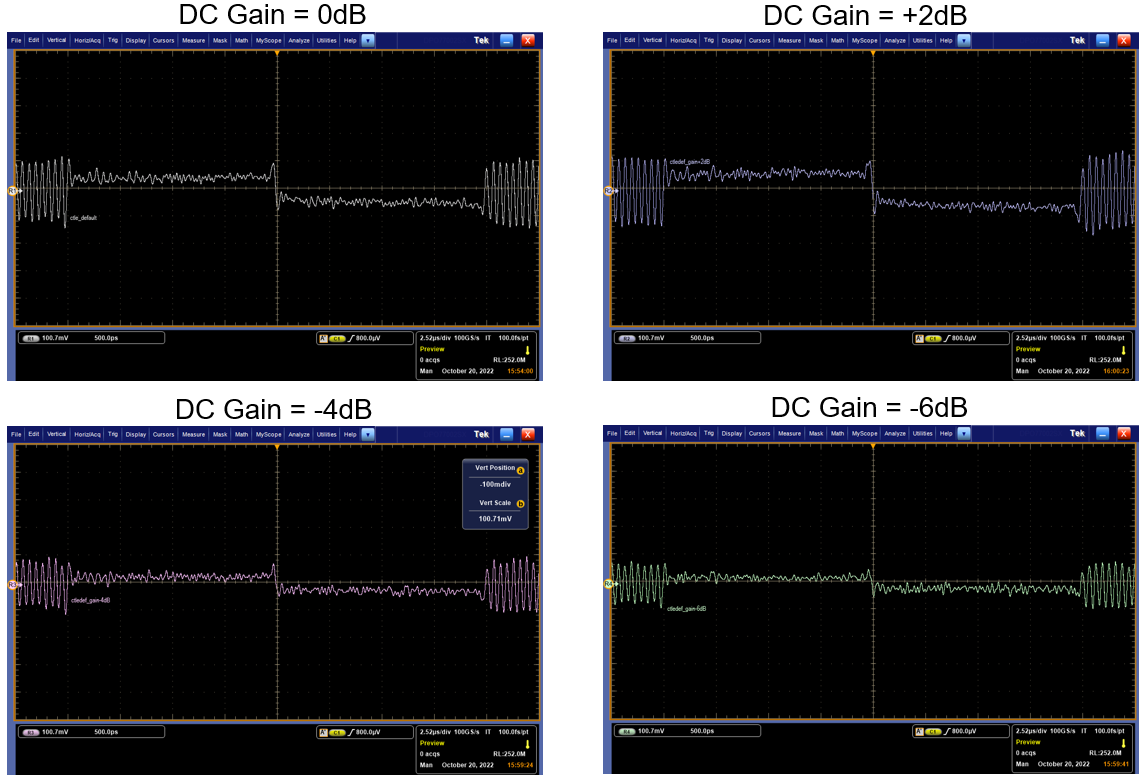SNLA421 December 2022 DS320PR810 , SN75LVPE5412 , SN75LVPE5421
3.3 Effects of DC Gain on Time Domain Signal
The redriver output is also affected by the DC Gain applied to the signal; these effects on the time domain signal can be observed in Figure 3-4. Note that the EQ Index selected for these tests is the Default setting.

Figure 3-4 Time Domain Signal Comparison of DC Gain
As seen in Figure 3-4, adjusting the DC Gain mainly impacts the low frequency components of the time domain signal, either increasing the DC voltage level (at +2dB) or decreasing the DC voltage level (-4dB and -6dB). Notice that the high frequency components of the signal are minimally affected by adjusting DC Gain, and that amplitude of the long string of zeros or ones is reduced as gain approaches the -6dB DC Gain setting.